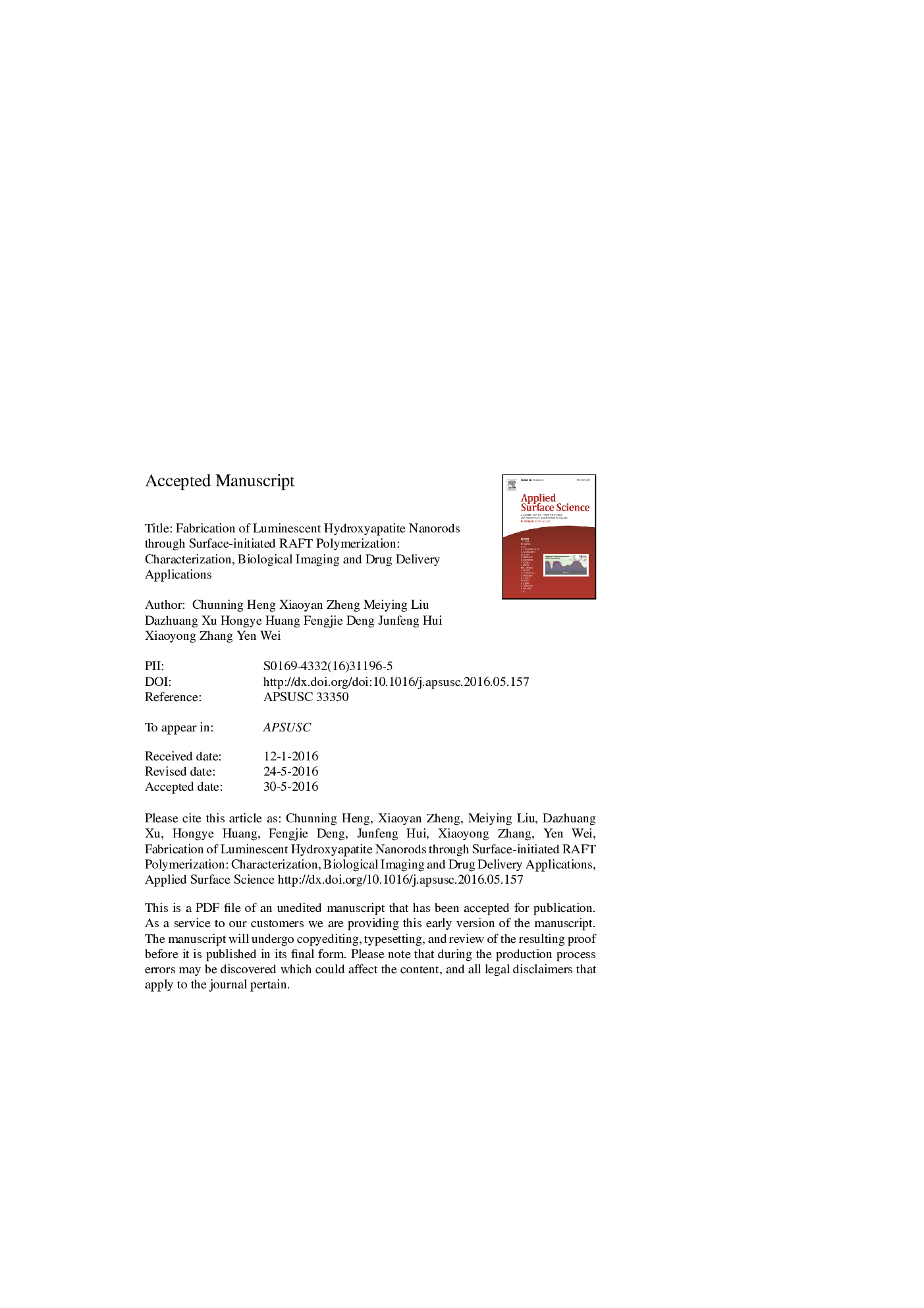| Article ID | Journal | Published Year | Pages | File Type |
|---|---|---|---|---|
| 5347282 | Applied Surface Science | 2016 | 21 Pages |
Abstract
Hydroxyapatite nanomaterials as an important class of nanomaterials, have been widely applied for different biomedical applications for their excellent biocompatibility, biodegradation potential and low cost. In this work, hydroxyapatite nanorods with uniform size and morphology were prepared through hydrothermal synthesis. The surfaces of these hydroxyapatite nanorods are covered with hydrophobic oleic acid, making them poor dispersibility in aqueous solution and difficult for biomedical applications. To overcome this issue, a simple surface initiated polymerization strategy has been developed via combination of the surface ligand exchange and reversible addition fragmentation chain transfer (RAFT) polymerization. Hydroxyapatite nanorods were first modified with Riboflavin-5-phosphate sodium (RPSSD) via ligand exchange reaction between the phosphate group of RPSSD and oleic acid. Then hydroxyl group of nHAp-RPSSD was used to immobilize chain transfer agent, which was used as the initiator for surface-initiated RAFT polymerization. The nHAp-RPSSD-poly(IA-PEGMA) nanocomposites were characterized by means of 1H nuclear magnetic resonance, Fourier transform infrared spectroscopy, fluorescence spectroscopy and thermal gravimetric analysis in detailed. The biocompatibility, biological imaging and drug delivery of nHAp-RPSSD-poly(IA-PEGMA) were also investigated. Results showed that nHAp-RPSSD-poly(IA-PEGMA) exhibited excellent water dispersibility, desirable optical properties, good biocompatibility and high drug loading capability, making them promising candidates for biological imaging and controlled drug delivery applications.
Related Topics
Physical Sciences and Engineering
Chemistry
Physical and Theoretical Chemistry
Authors
Chunning Heng, Xiaoyan Zheng, Meiying Liu, Dazhuang Xu, Hongye Huang, Fengjie Deng, Junfeng Hui, Xiaoyong Zhang, Yen Wei,
